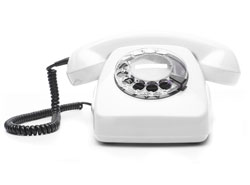Vanity Numbers: Do They Really Make Difference in Sales?

Everyone, every day, is bombarded by a flood of advertising messages. On television, on the radio, online, on our smartphones, on our store receipts, in our email inboxes – even on the walls of restrooms. It seems that consumers simply can’t escape advertising. In the 1970’s the average person was exposed to around 500 marketing messages a day. Today, that number has shot up to as many as 5,000 per day. Now, more than ever, a company’s marketing messages must not only cut through the noise, but they must also be unforgettable.
Successful marketing is all about converting viewers (or listeners, or readers) into inquires, and then converting those inquiries into customers. In order to encourage people to pick up the phone to learn more about your business, you not only have to give people a compelling reason to call, but you must also give them a telephone number that they can remember. This is where vanity numbers come into play.
What is a Vanity Number?
We’ve all seen and heard vanity numbers, especially those of us who find ourselves staring at television infomercials late at night or on lazy Sunday afternoons. Vanity numbers are telephone numbers that are designed around words, rather than digits. They spell out a word or phrase that describes a business or product such as 1-800-FLOWERS, 1-800-GOT-JUNK, or 1-800-MATTRESS.
Vanity numbers are effective – and extremely popular. They are in high demand across the country because they can help generate real results.
Does a Vanity Number Really Make a Difference?
According to a recent study conducted by players in the toll-free telephone industry, vanity 800 numbers can improve recall rates of print or billboard ads by 84%. They also make broadcast advertising nine times more effective.
After hearing a vanity number in a 30-second simulated radio ad, 72% of study participants were able to correctly recall the number that they heard, as opposed to 5% who could correctly remember a number made up of random digits. They also showed the participants simulated print advertisements, one that included a vanity toll-free telephone number and one that did not. The subjects stated overwhelmingly that they would be more likely to call the business with the vanity number, as it implied a sense of trust.
Vanity numbers greatly improve a prospect’s recall ability, which also improves the chances that they will pick up the phone and call when they have a need for the products or services offered by the companies utilizing the numbers. They also instill a sense of trust in potential callers. Consumers have been conditioned to associate 1-800 telephone numbers with large, established, and trustworthy businesses, no matter how large or how small a company may actually be.
How to Get a Vanity Number

The process of securing a vanity telephone number has never been as simple as it is today. Thanks to the internet and the advent of online telephone services, businesses can have a new vanity number up and running in a matter of minutes. All you need to do is select a provider and contact them to choose your number. Toll free telephone number providers all have access to the same database, so you don’t have to worry that only certain providers have access to certain numbers. Businesses are not limited to their local telephone company when it comes to toll-free service, either. They can choose their own provider based on pricing, availability, and customer satisfaction.
A vanity number will not interrupt your current telephone service, nor will it take the place of your local telephone number. Your provider simply “points” all incoming calls to your vanity number to your direct business line. The process is extremely simple and seamless for both consumers and for businesses.
In the end, you’ll always have to give people a reason to call you – they’ll never pick up the phone if your ads don’t make a compelling case – but a vanity number can benefit business in all industries and niches. They improve consumer recall rate and make existing advertising far more effective, making a long-term difference in the bottom line..